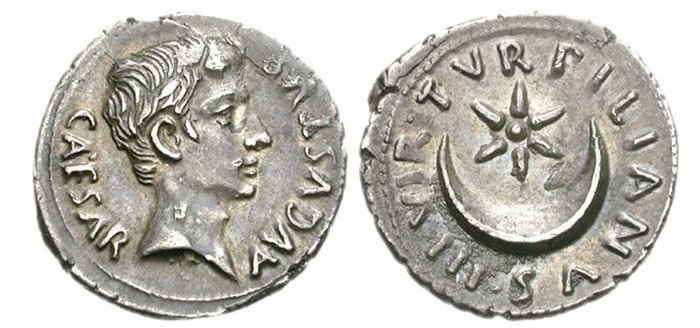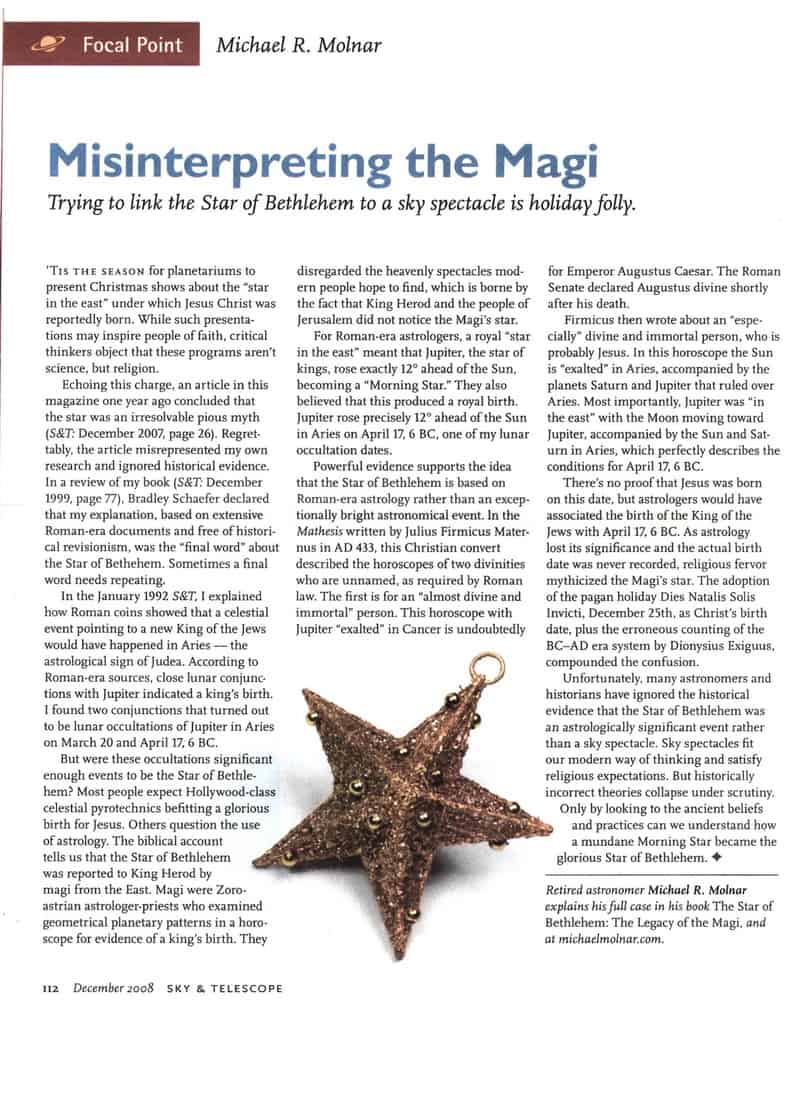Millions around the world viewed the “Great Conjunction” of Jupiter and Saturn in the southwest sky Monday evening as Jupiter “caught up with” and passed Saturn, appearing as one bright star from our earthly vantage point even though their orbits are millions of miles apart. This close a conjunction between the two has not happened since 1623–four hundred years ago–and it has been over 800 years since the “Great Conjunction,” as Galileo called it, has happened at night, visible to the entire world, weather permitting. NASA has a nice article with photos at their site, see “The Great Conjunction of Jupiter and Saturn.”

Some have called this the “Christmas Star,” making reference to the account in the gospel of Matthew in which “wise men from the East” came to Jerusalem, reporting to King Herod the Great that the “king of the Jews” had been born, heralded by the appearance of “his star in the east.” This reference appears to refer to some kind of astrological “sign” that would have appeared around the time of Jesus’ birth. Indeed, astrology played an enormous role in Hellenistic and Roman history and culture with many recorded instances, both in texts and coins, whether heralding or predicting major events. In fact, it was even a crime in Roman imperial times to plot the horoscope of the Emperor, given the widespread belief that the positions of the constellations and the movement of the Sun, moon, and planets through them, were such powerful indicators of significant fateful events in human affairs.
Our two birth narratives, Matthew (2:1-12) and Luke (2:1-20), both place the birth of Jesus toward the end of the reign of Herod the Great, most commonly dated to 4 BCE–though some have argued as late as 1 BCE. Accordingly, the date of the birth of Jesus has been variously place between 7BCE down to 2BCE. Interpreters have searched the records to try and identify what celestial or astrological phenomenon Matthew may be reporting–whether a planetary conjunction, comet, nova, or astrological zodiac sign.
The proposals have been many, and in fact, some have even argued that the “star” is no celestial phenomenon at all, but rather an angel, see Dale Allison, “What Was the Star that Guided the Magi?” Bible Review 9, no. 6 (1993): 20–24, 63. However, most who have sought to answer this question have looked to the skies. One of the best bibliographies, with critical discussion, is that of Jack Finegan in his Handbook of Biblical Chronology, pp. 306-320–a book that should be on the desk of every student of the Bible for almost any historical question involving chronology. Also quite accessible is Raymond Brown’s classic work, The Birth of the Messiah, in which he provides notes to Matthew account surveying some of the main proposals (pp. 166-177). Finegan, by the way, favored the view of Ernest Martin, in his book, The Star that Astonished the World (Academy of Scriptural Knowledge: 1991), who focused on planetary and stellar events in the years 3-2 BCE.
It is most notable that Johannes Kepler in 1604 proposed that a conjunction of Jupiter and Saturn in the year 7BCE, such as the one we just witnessed this week, was indeed the best candidate for the “Star of Bethlehem,” even though the conjunction was not close enough to appear as a single star that year. However, the date of 7 BCE stands out for other related reasons when one looks at the broader astrological picture. I highly recommend Simo Parpola’s summary of this evidence in his article, “The Magi and the Star,” Bible Review 17, no. 6 (2001): 16–19, 22–23, 52, 54, along with the spectacular book by Michael R. Molnar, The Star of Bethlehem: The Legacy of the Magi (Rutgers University Press, New Brunswick, 1999). Parpola is Professor emeritus of Assyriology at the University of Helsinki, Finland and Molnar is is an astronomer at Rutgers where he manages the Physics labs. The two disagree on details but both focus on 7 BCE and are well worth considering.

I particularly like Molnar’s use of coin evidence, his discussion of regal horoscopes, and his focus on astrological portents that apply specifically to Judea, particularly April 17, 6 BCE. We find that Roman coins of the period regularly depict astrological signs as portents related to the birth or accession of rulers and Molnar shows that Aries was particularly relating to the Province of Judea. In fact, one ancient astrologer remarked about that day as befitting the birth of “a divine and immortal person.”
Here is a nice succinct overview by Molnar of his views:










Comments are closed.